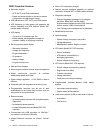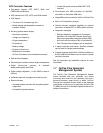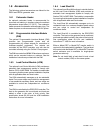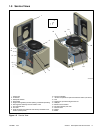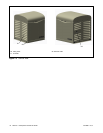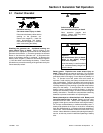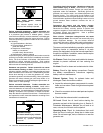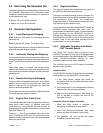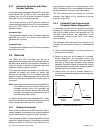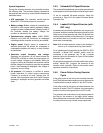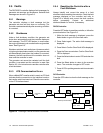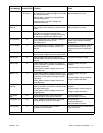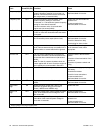
TP-6880 10/1420 Section 2 Generator Set Operation
Carbon monoxide.
Can cause severe nausea,
fainting, or death.
The exhaust system must be
leakproof and routinely inspected.
WARNING
Carbon monoxide symptoms. Carbon monoxide can
cause severe nausea, fainting, or death. Carbon monoxide
is a poisonous gas present in exhaust gases. Carbon
monoxide isan odorless, colorless,tasteless, nonirritatinggas
that can cause death if inhaled for even a short time. Carbon
monoxide poisoning symptoms include but are not limited to
the following:
D Light-headedness, dizziness
D Physical fatigue, weakness in
joints and muscles
D Sleepiness, mental fatigue,
inability to concentrate
or speak clearly, blurred vision
D Stomachache, vomiting, nausea
If experiencing any of these symptoms and carbon monoxide
poisoning is possible, seek fresh air immediately and remain
active. Do not sit, lie down, or fall asleep. Alert others to t he
possibility of carbon monoxide poisoning. Seek medical
attention if the condition of affected persons does not improve
within minutes of breathing fresh air.
Generator set operation. Carbon monoxide can cause
severe nausea, fain ting, or death. Carbon monoxide is an
odorless, colorless, tasteless, nonirritating gas that can cause
death ifinhaled for even ashort time. Avoid breathing exhaust
fumes when working on or near the generator set. Never
operate the generator set inside a building. Never operate the
generator set where exhaust gas could seep inside or be
drawninto apotentiallyoccupiedbuilding throughwindows, air
intake vents, or other openings.
Carbon monoxide detectors. Carbon monoxide can
cause severe nausea, fainting, or death. Install carbon
monoxide detectors on each l evel of any building adjacent to
thegenerator set. Locate thedetectors toadequatelywarn the
building’s occupants o f the presence of carbon monoxide.
Keep the detectors operational at all times. Periodically test
and replace the carbon monoxide detectors according to the
manufacturer’s instructions.
Hazardous voltage.
Will cause severe injury or death.
This equipment must be installed and
serviced by qualified electrical
personnel.
DANGER
Grounding electrical equipment. Hazardous voltage can
cause severe injury or death. Electrocution is possible
whenever electricity is present. Ensure you comply with all
applicable codes and standards. Electrically ground the
generator set, transfer switch, and related equipment and
electrical circuits. Turn off the main circuit breakers of all
power sources before servicing theequipment. Never contact
electrical leads orappliances when standingin water oron wet
ground because these conditions increase the risk of
electrocution.
Connecting the battery and the battery charger.
Hazardous voltage can cau se severe injury or death.
Reconnect the battery correctly, positive to positive and
negative to negative, to avoid electrical shock and damage to
the battery charger and battery(ies). Have a qualified
electrician install the battery(ies).
Short circuits. Hazardous voltage/current can cause
severe injury or death. Short circuits can cause bodily injury
and/or equipment damage. Do not contact electrical
connections with tools or jewelry while making adjustments or
repairs. Remove all jewelry before servicing the equipment.
To ensure continued satisfactory operation, perform the
following checks or inspections before or at each
startup, as designated, and at the intervals specified in
the service schedule. In addition, some checks require
verification after the unit starts.
Air Cleaner. Check for a clean and installed air cleaner
element to prevent unfiltered air from entering the
engine.
Air Inlets. Check for clean and unobstructed air inlets.
Battery. Check for tight battery connections. Consult
the battery manufacturer’s instructions regarding
battery care and maintenance.
Exhaust System. Check for exhaust leaks and
blockages. Check the muffler condition.
D Inspect the exhaust system components for cracks,
leaks, and corrosion. Check for tight exhaust system
connections.
D Check forcorroded orbroken metalpartsand replace
them as needed.
D Check that the exhaust outlet is unobstructed.
Oil Level. Check the oil level before starting the
generator set and at the intervals given in Section 5,
Scheduled Maintenance. Maintain the oil level at or
near, not over, the full mark on the dipstick.
Operating Area. Check for obstructions that could
block the flow of cooling air. Keep the air intake area
clean. Do not leave rags, tools, or debris on or near the
generator set.





